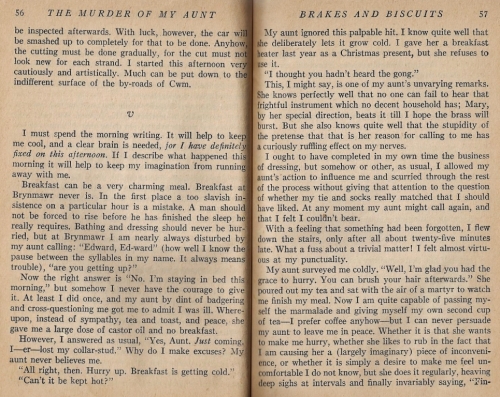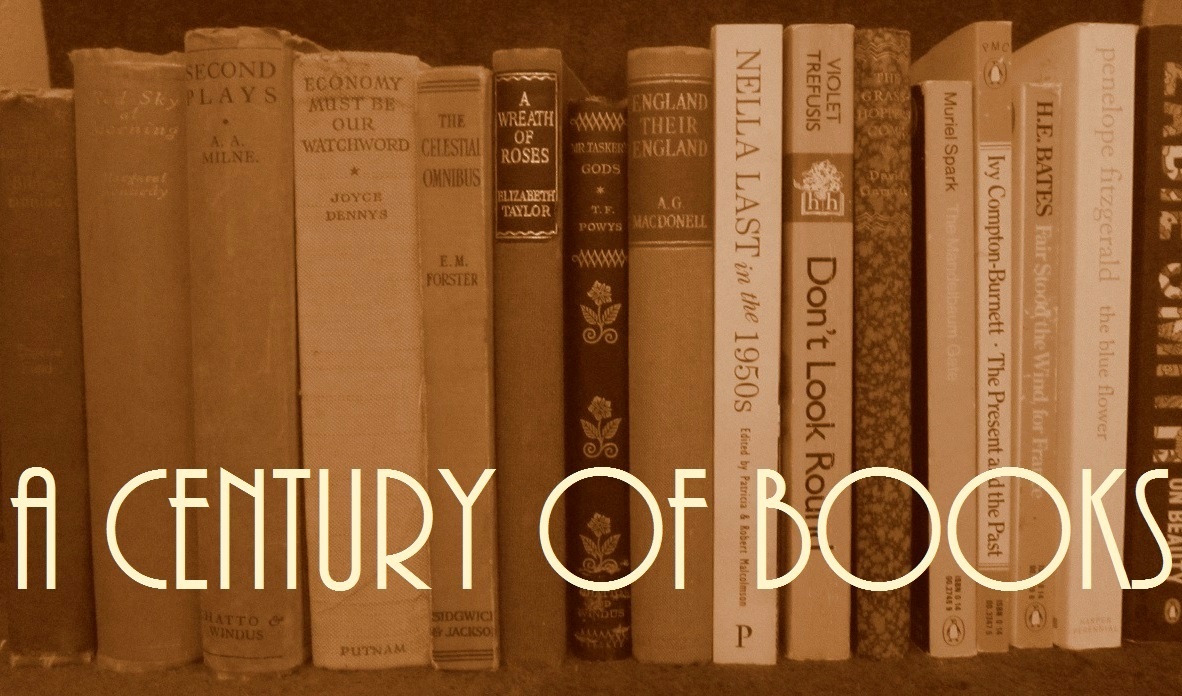 The Town in Bloom by Dodie Smith ~ 1965. This edition: Corsair, 2012. Paperback. ISBN: 978-1-78033-301-4. 314 pages.
The Town in Bloom by Dodie Smith ~ 1965. This edition: Corsair, 2012. Paperback. ISBN: 978-1-78033-301-4. 314 pages.
My rating: 8.5/10
After my mixed feelings about one of Dodie Smith’s “other” (meaning not I Capture the Castle) adult novels, The New Moon with the Old, and my rather shaky introduction to this one (I quit early on the first time of attempting to read it) I was very pleased to find that I did like this one, after all. A whole lot. Now isn’t that interesting?
Three ex-actresses meet for their every-five-years reunion dinner, hoping that this year, the eighth reunion, the fourth of their friends, the elusive Zelle, may join them, but it appears that this is not to be.
It’s been forty years since vivacious narrator Mouse (we never learn her real name), placid Molly and sleekly beautiful Lilian were all thrown together in the lively heyday of the 1920s London theatre scene. They have all gone on to varying degrees of success and happiness, and by and large enjoy their reminiscences every time they meet, but there is a shadow lurking regarding the unknown fate of the fourth of their jolly crew, who vanished (voluntarily) from her room in the theatrical boarding house they all shared and hasn’t been seen or heard from since, despite repeated pleas to join the reunion published in the personal ads of The Times.
As the three friends chat after their window table lunch, Mouse becomes increasingly intrigued by an eccentrically dressed woman huddled over her drab knitting on a park bench outside, who keeps glancing at the ladies inside in a surreptitious manner. Could it possibly be…?
An attempt to intercept the maybe-Zelle fails, but Mouse has marked the house her quarry disappeared into for future investigation. Meanwhile, the encounter has triggered a flood memories of the summer in the 1920s when the four girls came together in their unlikely friendship, and which ultimately saw all of them launched on their forever-after paths due to decisions made in the passionate heat of those few torrid months.
I hesitate to go much further in my description of the plot, because I did so enjoy unravelling it all on my own, but I will say that it involves a whole lot of sex. Thinking about it, talking about it, plotting how best to go about arranging it, and of course doing it. There is nothing at all graphic, aside from some teasing reference – “I should write down all the details in my diary but well maybe I’ll just let it live in my memory…” – but these girls are all, in their own ways, carrying on very active love/sex lives. Mouse is assumed to be the most innocent, due to her relative youth (she’s eighteen) and child-like appearance (she’s tiny and innocent looking) but she turns out to be nothing of the sort, absolutely throwing herself into the experience, and eagerly shedding her virginity with only a few meditative regrets:
I was very happy too – in a way; I am finding that out as I write. I am, somehow…exorcising the loneliness. It will pass, it will pass.
But with it will pass someone I shall be a little sorry to lose: myself as I was before last night. Aunt Marion had a book of poems by Charles Cotton which she bought for the Lovat Fraser decorations, and in one poem are the lines:
She finds virginity a kind of ware That’s very, very troublesome to bear, And being gone she thinks will ne’er be missed.I think one will miss it, but only for a very little while. Soon one will forget that it ever meant anything. Perhaps it never did; already I can almost accept that. The great plane tree outside my window is just as beautiful it was that May night when I last wrote in my journal, though its summer leaves are a little less green than the leaves of spring…
Shades of Cassandra Mortmain, I believe I detect in these youthfully self-focussed musings.
The novel gives a fascinating glimpse of the world of the 1920s’ theatre, being very much involved with backstage life, and the details Dodie Smith gives are worth wading through the occasionally tiresome teenage angst of our narrator, and the annoyances that her full-speed-ahead-towards-the-goal persona occasionally engender.
The theatre scenes of the first half of the book are fascinating, though the focus changes (dramatically) once the love affairs start. I did feel that perhaps Mouse’s experiences in the theatre were a bit too plush-lined – she seems to end jam side up pretty well each and every time she stumbles, being taken in and indulged and helped and sheltered again and again and again, even by those she’s deliberately wronged. Rather special, is our Mouse.
I was relieved by the ending, which wasn’t as blissfully neat and tidy as I feared it would be, though it glossed over a whole lot of bothersome details, citing their unimportance due to the passing of four forgetful decades.
Dodie Smith gained my readerly good regard by her willingness to show that there were no fairy tale endings, or, more aptly, that there are really no endings at all (except the very obvious final final one); life does go on and on and on, with no attainment of a permanent goal, and, furthermore, it (life) can continue to be exceedingly interesting, no matter what your birth certificate lists your age as.
Much has been made in some of the other reviews I’ve read about the unexpected feminist elements and the surprising frankness regarding sex in this book, but I didn’t at all feel that these were unusually daring, because though the novel was for the most part set in the 1920s, it was written in the 1960s. Though our mothers, grandmothers and great-grandmothers kept a discreet silence (for the most part) about their personal sexual affairs, there is no doubt whatsoever that their private lives were just as sophisticated as anything going on in this generation, so any sort of “Gosh! Golly! Gee whiz! These girls were downright modern in their escapades!” attitude gets nothing but a yawn from me.
To sum up, The Town in Bloom is a rather better book, in my opinion, than The New Moon With the Old, though I Capture the Castle still occupies a niche set well above either of these.
I have several volumes of Dodie Smith’s biography waiting on the TBR shelves, but I do believe I will investigate some more of her fictions first, if I can get my hands on them. It Ends with Revelations will be the easiest to obtain, and after that I’m not quite sure where to go. Possibly a play or two? Dear Octopus has been recommended to me as worthy of reading. And maybe a revisit to the juveniles, to dally for a bit among the Dalmations…





















Slighty Soporific: The Shapes of Sleep by J.B. Priestley
Posted in 1960s, Century of Books - 2014, Priestley, J.B., Read in 2014, tagged 1962 Novel, Century of Books 2014, Cold War Paranoia, Mystery-Suspense, Priestley, J.B., Social Commentary, Social Engineering & Brainwashing, The Shapes of Sleep on March 24, 2014| 4 Comments »
My rating: 5/10
Close call, J.B. You almost didn’t make that 5, but my enduring fondness for your many years’ worth of earnest and good-humoured novels and essays and memoirs tipped the balance.
This is not so much a baddish book as a terminally undecided one. It reads like the author can’t quite decide on some rather major plot developments so has decided to make it up as he goes. Which can work, but in this case means false starts, dropped threads, and a general lack of a sturdy backbone to build the story upon.
And J.B. Priestley has tried his hand here at writing sexy, but it reads very much like the author is extremely uneasy with the style, and the hands-on-breasts and rigid (or not rigid) nipple descriptions are much more embarrassing for the reader than titillating. At least I found them so. I absolutely cringed, and mostly because it made the writer look inept and out of his comfort zone, style-wise. This is Priestley, after all, and you’d expect a higher level of capability in handling a scene. Any sort of scene.
Following closely on the heels of 1961’s uneven “suspense-thriller” Saturn Over the Water, Priestley further experiments with the genre, using the action to sugar coat some intellectual musings about the continual deterioration of societal mores, the dangers of state-sponsored paranoia (this is smack dab in the middle of the Cold War), and the status of women inside and outside of marriage. There are some fairly substantial shades of proto-feminism here, with Priestley trying his darnedest to articulate his support and appreciation for the “other side” from his masculine point of view.
So, regarding the actual story.
Here we have a freelancer journalist, Ben Sterndale, on the declining end of what was apparently a stellar career. He is offered a small job which will require him to use his investigative skills rather than his writing ability. A pale green piece of paper covered in mysterious figures and foreign handwriting has gone missing from an advertising agency office. Strayed or stolen, it is wanted back. Luckily there is a tiny corner of the paper left behind, with a few word ends which Ben interprets to be of German origin, and the investigation is on.
People with guns and sinister accents pop in and out, as well as a female person who is rather obviously not what she seems. Ben tenaciously follows every little lead, and by a combination of sheer bullheadedness and a fair bit of luck (courtesy our old fictional friend, the blissful coincidence) tracks down the secret behind the green paper as well as the girl.
A Helen MacInnes-like hectic tour of Germany plays a central role in the story; Ben-voiced-over-by-Priestley does not care for the Germans much – as I already sort of had gathered from his (Priestley’s) jibes in Saturn Over the Water – which adds an uneasy element to his adventurings in that country.
The mysterious paper and the secret it holds the key to are the least important thing going on here; so much so that even when we get a firsthand description of the “shapes of sleep” and their sinister inferences (spoiler: this would apparently be brainwashing and social engineering, to be delivered via subliminal messaging/advertising), we can’t quite believe that they are worth killing and being killed for, and they fade away completely in the last scene of Ben/Priestley mulling over the deteriorating state of the world and the changing status of women and their vital importance to future “peace and prosperity.”
I couldn’t help but wonder how much of this was due to Priestley’s private life influencing his writing. When The Shapes of Sleep was written, Priestley was sixty-eight years old, and just a few years into his third marriage, with archeologist/researcher and fellow writer (and Priestley’s co-writer in their 1955 collection of travel and opinion essays, Journey Down a Rainbow) Jacquetta Hawkes.
All in all, a rather unsatisfactory book, mostly interesting to this “fan” to enable me to check off another entry in Priestley’s widely-varied oeuvre. I may read it again one day to see if my impressions can be revised; then again, I may not.
Here, see Kirkus for its take, from June 15, 1962. I was amused to read this briefly cynical review after I had formulated my own, and to see that I was not alone in my disenchantment regarding this novel.
Read Full Post »